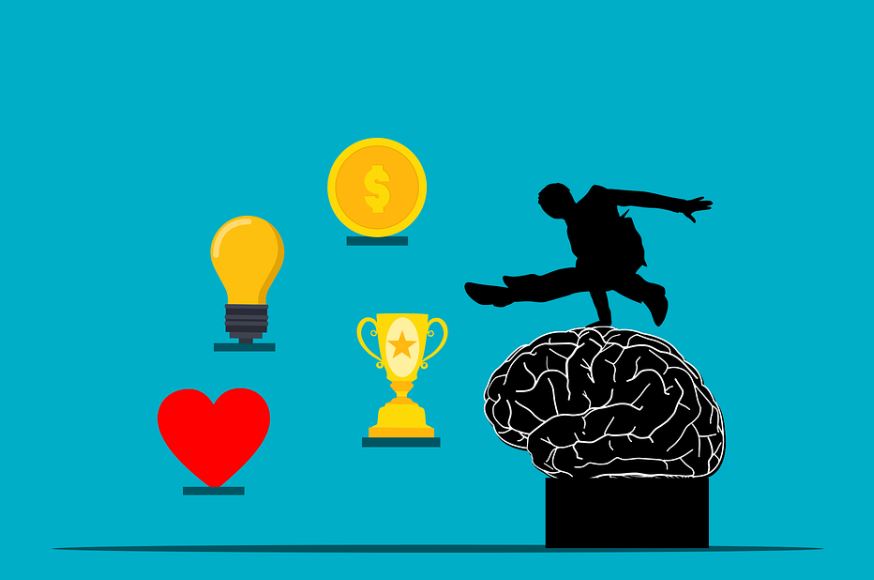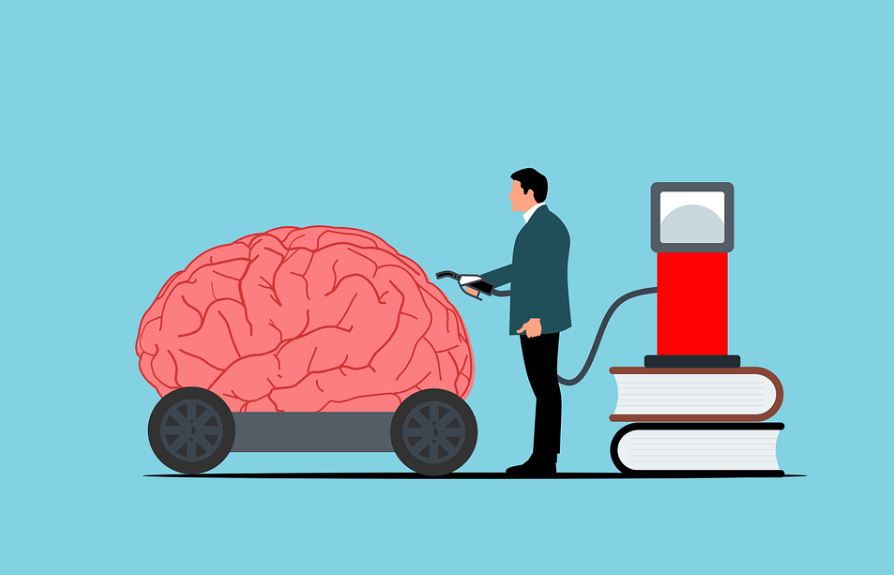Quadruple Your Learning Power in 4 Steps Using the Brain’s Working Dynamics

Without running your washing machine, you can’t expect your clothes to be cleaned. Just running your washing machine is not enough by itself. It would be best if you chose the proper washing mode suitable for the laundry you want to wash. Your Brain is just like your washing machine. The difference is that your washing machine comes with a manual, while your Brain does not have one. But don’t worry; we will most understandably tell you how to use your Brain. We offer you a “brain user guide.” With each of our articles, you read this guide and get to know your Brain better. We are preparing the most understandable guide in light of the latest scientific studies. Yes, everyone needs a brain user manual because everyone has one Brain. Everyone manages to train their Brain in some way without a guide, but unfortunately, it is not enough to train your Brain alone. It would be best to run it in the most appropriate and correct mode. Most people do nothing and wait for the things they want to happen all their lives. This is what most of us do! What about after that?

I did everything. We try to clear ourselves for not understanding why this is so. I thought of Dostoyevsky’s novel Crime and Punishment, which I read years ago. There was a crime and punishment in return. The reward for not using your mind is like in the example of failure!
Could there be a harsher punishment than this? If you don’t have a valid reason and are unsuccessful, you’re not using your brain properly. It is challenging to be successful if you do not perceive success as a process. Just as a student should be successful every year until he finishes university. You have to use your Brain correctly constantly. There can be many reasons for failure, and the important thing is to learn the reason for failure and to realize what needs to be done to be successful. Because you can’t do anything about something, you don’t know why.

In our observations, people emphasized that it is essential for them to admit their mistakes, but it is not enough to recognize the mistake. It is thought that the error is a crime, and this crime can be forgiven; it is of no importance to make a mistake if you can’t learn from the error and gain experience. The point to be emphasized here is to remind itself of what the Brain does and to emphasize that it is necessary to be conscious of the success of subsequent decisions. Your success can only change once you realize what you did wrong or where you went wrong. Maybe you made a mistake somewhere or are making mistakes in many places. If you continue to use your Brain without knowing how it works, many destructive thoughts and behaviors will emerge in you that will cause you to fail. The most common of these are:
- Reluctance,
- Irresponsibility,
- Lack of excitement,
- Lack of concentration,
- Unplanned,
- Psychological pressure,
- Not liking the subject,
- Laziness,
- To postpone
Success will increase in direct proportion to the learning power of your Brain. Every individual who continues their life alive continues to learn without interruption. Learning is not just necessary for students. And is required for the young, old, and even dying individuals. Your Brain scans your past information every second and makes new connections about them, which continues throughout your life, even if you are unaware of it. Even at night, learning continues non-stop. If you start to apply the practical information of the brain user guide that we have told you, you will be using your Brain correctly. So what happens if you start using your Brain properly?

The above nine reasons for failure will disappear on their own, and you will be successful and happy too! Your Brain has to work constantly, and if you know the working dynamics that feed your Brain, you will not deprive your Brain of them. The owners of the brain manual know and apply various ways to reach these dynamics. In the rest of the article, you will learn how to achieve these dynamic pure energy sources in 4 simple steps. All the secrets in the lives of successful and happy people have been revealed by reaching these energy sources. And you can get these dynamics most easily without suffering the troubles of other successful people because we are with you. You have your brain user manual at hand!
What is dynamic?
In general terms, it is the branch of physics in which a system undergoes changes over time that are examined and expressed. Issac Newton is considered to be its founder. Today, it is used in different meanings, like our brain dynamics. The importance of use is expressed as an energy source and a booster. What are internal dynamics? Emotions activate the Brain’s psychological, positive, and creative power.
Along with its positive contributions to the Brain’s functionality, it severely affects the concepts of balance, dynamism, and orientation. From solid character to an optimistic lifestyle, it is the biggest supporter of the Brain. In recent years, the word dynamics has been used instead of internal power, as it is thought to be very appropriate.

What are the Dynamics of the Brain?
The shortest answer to this is: It is the Brain’s energy source. In other words, it is a collection of emotions that renew the Brain. The Brain, who knows what it is doing, attacks its dynamics in the face of sadness, drama, and tragedy because it wants to eliminate the negative emotions that affect it as soon as possible. He gets rid of negative emotions thanks to the dynamics that regulate his positive energy, increase his motivation and make him feel good.
What are the fundamental dynamics of the Brain?
- Love
- Request
- Enthusiasm
- Motivation Self Confidence
- Sexuality
- Freedom
- Passion
Are we aware of how vital the dynamics we think we know, which seem ordinary at first glance, really are? Unfortunately no.
We realize the importance of our inner dynamics that we are unaware of, although they are always with us, but only when we feel the need. Another side of the business is that we are unaware of its value and wastefully use it. The Brain’s dynamics are the fuel a car needs to run.
If the consciousness of the dynamics of the Brain is felt, its value is realized. The important thing here is the balance between feeling the awareness of awareness and need and use. Detection is never forced. It’s against human nature! Do you know this? “Yes.” “Then why are we despotic of perception?” First, we treat ourselves as despots. We hurry and jump headfirst. Whereas, First, we need to create the infrastructure of perception.
Unfortunately, we must admit that we are a society that protests perception. We are not aware that by opposing, we not only prevent people from using their abilities but also cause psychological pressure. Coercion is unacceptable in any field, especially in perception, because perception shows its actual value inaccessible environments—errors in perception cause social harm. Therefore, education on perception is necessary. The main thing about learning is how to teach and learn because perception requires social awareness, personal skills, and understanding.

The theory is clear “You can’t learn what you can’t perceive. You can’t create synergy.” People don’t want to accept any subject, even if it’s for their benefit, and they react in the face of compulsions. It’s like warning a child to study. There is no Forced beauty in your Brain. You can’t get results by forcing. Until a plant grows and bears fruit, it receives stimuli from natural stressors, which benefits it. Nature trains and strengthens it with all kinds of difficulties. While this plant is growing, pulling by the stem for its elongation is not natural stress; on the contrary, it is a severe strain, which can damage its roots and even cause it to die. Your learning process is similar to how a plant grows and bears fruit. If you want your Brain to take beautiful fruits, you must support its natural cycle, understand how it works and show appropriate behavior. You should not strain your Brain!
1-Be One of The People Who Use Your Mind While Learning

How do you learn,? Are you doing this consciously? Learning is a process that a person performs without being aware of it (in fact, we should consider it as two different human characters, one is a person who uses his mind, and the second is a person who is unaware of using his mind) When you practice deliberate, high-intensity learning occurs. You will have learned how to do this when you understand the suggestions we give at the end of the article. But even if you don’t, your brain continues to learn anyway. Because the Brain learns everything because it is curious, he remembers because he needs to know. The brain learns because it feels compelled. So you, too, will be able to be successful and unlock the magnificent potential of your Brain. All you need for this is the brain user manual. Brain User Manual owners are people who want to use their minds in the best way possible. And thanks to this guide, we have prepared for you, always at hand, you will start to use your mind!
People who use their minds to learn and use what they have learned are both more successful and able to produce creative projects by thinking bigger. So how do we use our minds? This is not as difficult as you might imagine and is quite fun. Yes, we are now revealing to you a big secret that we have noticed as a result of the observations we have made for years: Using our minds is primarily related to the feeling of “CURIOUS” that entertains us. Curiosity is one of the most incredible powers that stimulates your Brain.

For this reason, we would like to start by talking about the importance of being curious. This topic is vital. Your learning process is perceived as much more valuable when it involves curiosity. Because the Brain perceives what is learned as a result of curiosity as a “reward” earned. We will continue to explain the other dynamics of the Brain in more detail below, but we would like to briefly talk about some of the studies that influential scientists have done before.
There are many studies on learning, which is accepted as one of the important values of our age. Of course, personal development has an important place in the studies carried out. Other important ones, such as feeling the Brain’s awareness and activating the Brain’s creative center with the talk to your brain project, started to draw attention. You can look at our article “Start Getting What You Want in Your Life by Talking to Your Brain.” The Metaphor of Talking to Your Brain is a significant study in terms of activating your Brain.
2-If You Can Stimulate Your Emotions While Learning, The Hippocampus Will Work, And You Will Learn Marvelously

Roger Wolcott Sperry is a neuropsychologist famous for his split-brain studies. This work earned him the 1981 Nobel Prize in Physiology or Medicine, along with David Hunter Hubel and Torsten Nils Wiesel.
There have been unexpected advances in how the brain learns over the past two decades. The facts revealed by a scientist named Roger Sperry in 1981 on a patient who had one of both lobes of his Brain removed revolutionized rapid learning and memory training methods. So why has education in our country “become a burden and even an unbearable burden for students?” Why can’t those who graduate from school gain useful life skills and learn their profession? The answer to all these questions depends on how the brain learns. Pieces of training carried out contrary to the realities of Brain and learning, of course, do not educate people. We can go further and say that training applied contrary to the working principles of the Brain make people stupid.

After the “Genome Project,” the most important scientific study of recent times, which started with the discovery of DNA in 1954 and is continuing, “the study of the human gene,” unraveling the secrets of the Brain has become the target design of the scientific world.
The Brain is divided into three interconnected parts. The hippocampus is located in the middle and is the “center of memory.” This center functions almost like the printer of the Brain. The answer we will give to whether we can activate the “printer of the brain” voluntarily and record the information we want is definitely “yes.” The hippocampus is the center that decides whether data will be stored in permanent memory. When synapses (the points where neurons communicate with each other) in the Brain’s hippocampus region are stimulated with high-frequency electrical signals, synaptic connections are strengthened.
The information that reaches us through various learning channels is recorded according to the “importance” we give them. We care about curiosity and interest; In short, in events where emotions are not activated, the information received is in the form of low-frequency electrical signals. The result is weak synaptic connections and no recording to the Brain’s “hard disk” (cortex). Because in such cases, “receptors” (we can say emotions) do not take action. In events where emotions are aroused, the hippocampus is activated, and the recording process is completed in the “cortex” located in the Brain’s outermost layer. This is what you want: A continuous learning process.

The third part of the brain, the cortex, is the part of the brain that thinks, speaks, writes, invents, wonders, plans, learns, intelligence and memory, and seems to have an unlimited capacity. It constantly communicates with the vision, hearing, and other perception centers on it and the outside world. This capacity is provided by the relationships established between neurons. Emotional events are recorded in the cerebral cortex via the hippocampus in the midbrain.
3- Engage Your Visual Power with Mind Maps and Make Boring Topics Entertaining

If you cannot make the subject interesting, your curiosity will not arouse, and your “learning processes” may fail if the issue does not become enjoyable and entertaining. We mentioned that effective learning is about not stimulating the brain region called the hippocampus. It is not impossible for information that does not carry the “curiosity and interest” label to obtain the necessary visa to enter the Brain. For this reason, we recommend you make a mind map using colored pencils while continuing your studies. The eyes see only what the mind is ready to perceive. 30% of the Brain is devoted to the sense of sight.

Yes, the most significant part of our Brain is devoted to the sense of sight. It is the first evaluation center of every subject, from perceiving to enjoyment, from shaping to positioning, from making sense to making the right decision. It’s like the camera. Our Brain introduces the world to us!
The sense of sight, which collects the data needed by the Brain in every subject, from intelligence development to creativity, also plays a vital role in using abilities. It is the decision center on many important issues.
4-Set Your Goal Let Your Brain’s Deep Powers Reveal

Of course, we cannot be expected to be successful in everything. This does not mean that we will always fail. At most, we should increase our determination to succeed and improve our ambition to follow, but what needs to be done should be decided after the reasons for failure are evaluated as a result of the Brain’s questioning of the creative power in the R&D laboratory. If the Brain produces counter-projects by starting research on the reasons after identifying the reasons for failure, it means it is using its power. If the Brain is not doing this, many reasons can come to mind. These can be counted as experiences such as pathology, psychology, family, environment, and environment.
In our observations, we saw the following; The students used their minds, opened their brain sensors to the full of perceiving every information thoroughly, and focused only on learning. They were just like an electronic computers. It was as if they were experiencing melancholy. They were so sure of themselves that everything was predetermined for them. The sparkle in his eyes signaled that I would be successful. When we realized that people who use their brains are more successful in setting goals, we investigated why. Our judgment did not mislead us because successful people were aware of the Brain’s Creative base R&D. They were questioning their brains. The Brain’s response was one word. You must succeed. Everything was at the core of this consciousness. A person without a goal does not use his Brain. A brain without a plan cannot be successful in using the mind, directing, or creativity. An example: A student using his brain studies. The reason it works is to be successful. Everything is based on a goal. The student who studies using his Brain even feels which faculty he will win. This feeling is made to be judged by the memory, thanks to the information it has loaded into its memory. If you still don’t have a goal, set one now!




